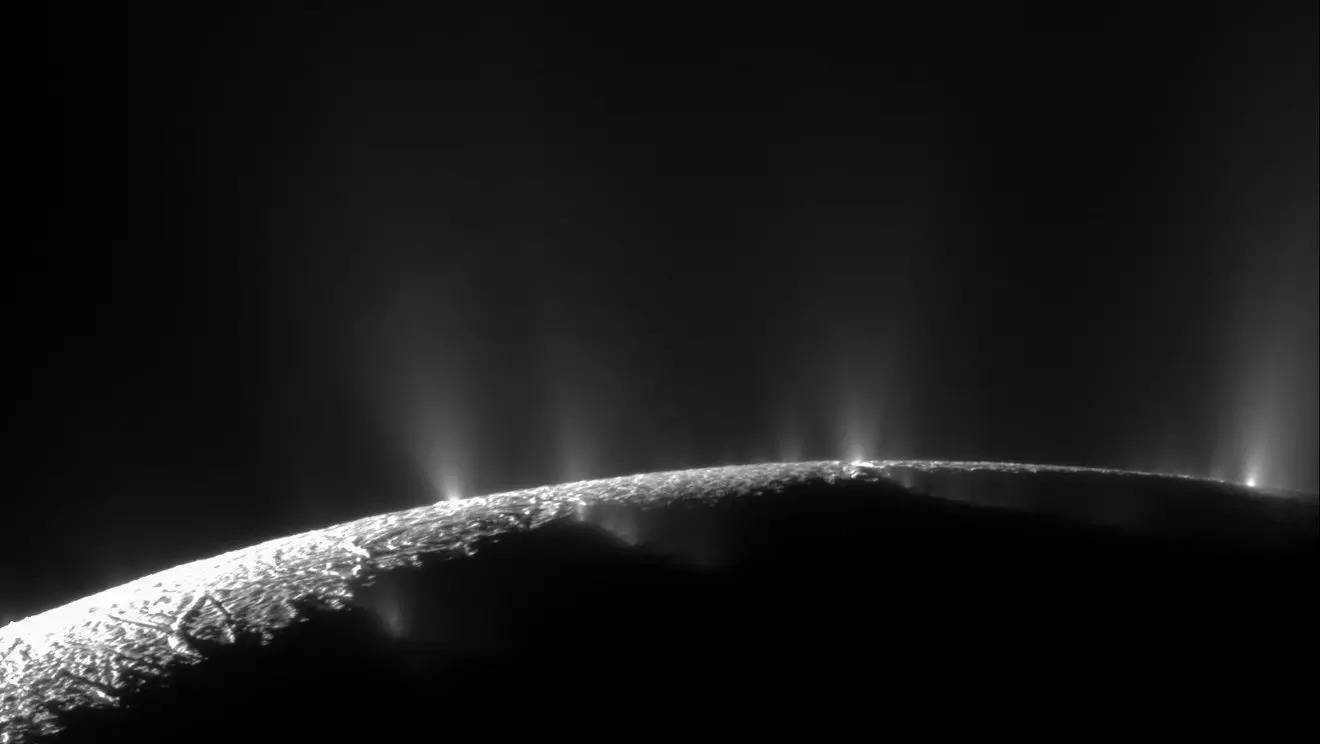[ad_1]
NEW DELHI: Phosphate, a key building block of life, has been detected in one of Saturn‘s moon’s, Enceladus’s, ocean, and in what scientists call the “first finding of phosphorus on an extraterrestrial ocean world”. The phosphates were detected in particles ejected from the ice-covered global ocean of Saturn’s moon Enceladus, the international team of scientists led by the Freie Universitat Berlin, Germany, found using data from Nasa’s Cassini space mission.
The team also found phosphate to be present in Enceladus’s ocean at levels at least 100 times higher than in Earth‘s oceans.
Phosphorous, in the form of phosphates, is known to be vital for life on Earth. It forms the backbone of DNA and is part of cell membranes and bones.
“By determining such high phosphate concentrations readily available in Enceladus’s ocean, we have now satisfied what is generally considered one of the strictest requirements in establishing whether celestial bodies are habitable,” said Fabian Klenner, a postdoctoral researcher in Earth and space sciences at the University of Washington, US, and third author of the study published in the journal Nature.
Worlds with oceans beneath a surface layer of ice is common in our solar system and occur on the icy moons of Jupiter (Ganymede) and Saturn (Titan and Enceladus), as well as even more distant celestial bodies, like Pluto. Cassini, the spacecraft, first discovered that Enceladus harboured an ice-covered watery ocean, and analysed material erupting through cracks in the moon’s south pole region using its Cosmic Dust Analyzer. NASA’s Cassini mission explored Saturn, its rings and moons from 2004 to 2017.
The analyser studied individual ice grains emitted from Enceladus and sent those measurements back to Earth. To try and match their unknown signatures in Cassini’s observations, Klenner tried different chemical compositions and concentrations in his samples.
“I prepared different phosphate solutions, and did the measurements, and we hit the bullseye. This was in perfect match with the data from space,” Klenner said.
While planets with surface oceans, like Earth, must reside within the “habitable zone” of their host stars so that the water neither evaporates nor freezes, worlds like Enceladus, having an interior ocean, can occur over a much wider range of distances, greatly expanding the number of habitable worlds likely to exist across the galaxy.
Referring to previous studies of Enceladus conducted by Freie, lead author Frank Postberg said, “Previous geochemical models were divided on the question of whether Enceladus’ ocean contains significant quantities of phosphates at all. These measurements leave no doubt that substantial quantities of this essential substance are present in the ocean water.”
The team also found phosphate to be present in Enceladus’s ocean at levels at least 100 times higher than in Earth‘s oceans.
Phosphorous, in the form of phosphates, is known to be vital for life on Earth. It forms the backbone of DNA and is part of cell membranes and bones.
“By determining such high phosphate concentrations readily available in Enceladus’s ocean, we have now satisfied what is generally considered one of the strictest requirements in establishing whether celestial bodies are habitable,” said Fabian Klenner, a postdoctoral researcher in Earth and space sciences at the University of Washington, US, and third author of the study published in the journal Nature.
Worlds with oceans beneath a surface layer of ice is common in our solar system and occur on the icy moons of Jupiter (Ganymede) and Saturn (Titan and Enceladus), as well as even more distant celestial bodies, like Pluto. Cassini, the spacecraft, first discovered that Enceladus harboured an ice-covered watery ocean, and analysed material erupting through cracks in the moon’s south pole region using its Cosmic Dust Analyzer. NASA’s Cassini mission explored Saturn, its rings and moons from 2004 to 2017.
The analyser studied individual ice grains emitted from Enceladus and sent those measurements back to Earth. To try and match their unknown signatures in Cassini’s observations, Klenner tried different chemical compositions and concentrations in his samples.
“I prepared different phosphate solutions, and did the measurements, and we hit the bullseye. This was in perfect match with the data from space,” Klenner said.
While planets with surface oceans, like Earth, must reside within the “habitable zone” of their host stars so that the water neither evaporates nor freezes, worlds like Enceladus, having an interior ocean, can occur over a much wider range of distances, greatly expanding the number of habitable worlds likely to exist across the galaxy.
Referring to previous studies of Enceladus conducted by Freie, lead author Frank Postberg said, “Previous geochemical models were divided on the question of whether Enceladus’ ocean contains significant quantities of phosphates at all. These measurements leave no doubt that substantial quantities of this essential substance are present in the ocean water.”
[ad_2]
Source link

